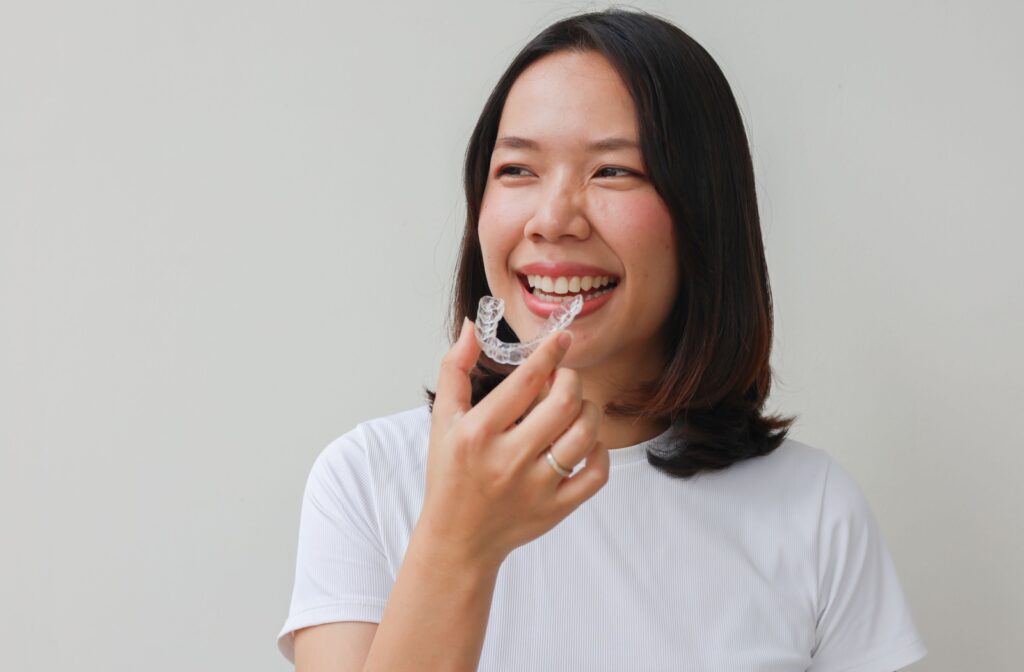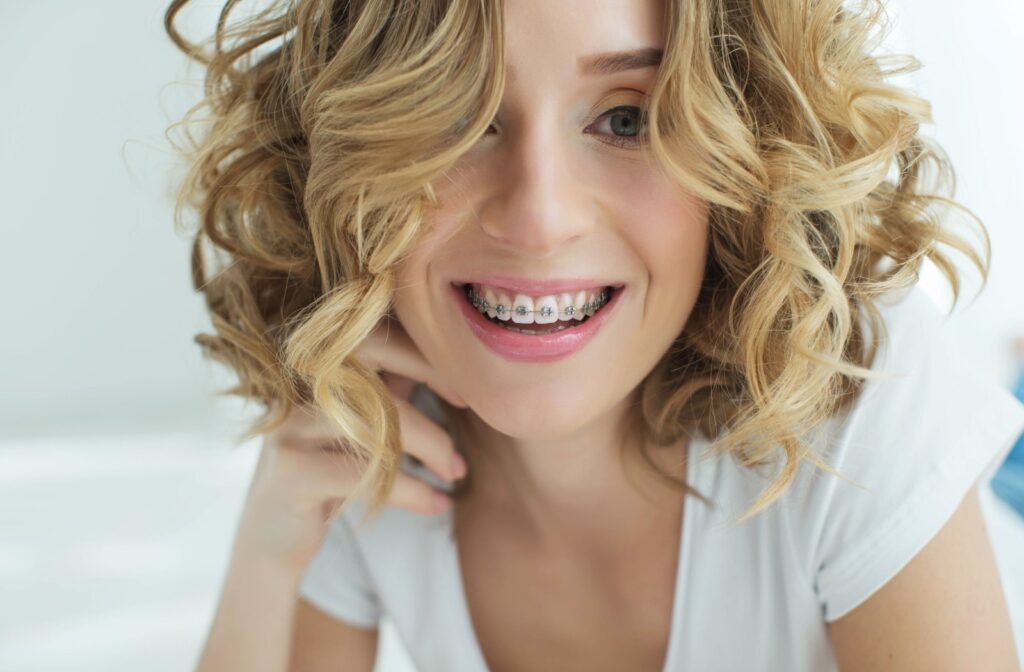Whether it’s for you or your child, choosing to straighten your teeth is a big step toward a healthier, more confident smile. Two of the most popular options are traditional braces and Invisalign clear aligners, both effective, but with key differences in how they work and fit into daily life.
The right orthodontic choice for your smile depends on your specific dental needs, lifestyle, and personal preferences. Understanding the key differences can help your family make a confident decision. Let’s explore what sets these two treatments apart.
How Braces and Invisalign Work
When you decide to straighten your teeth, you’ll look at two main types of orthodontic treatment. Both braces and Invisalign work by applying gentle, steady pressure to move your teeth into their correct positions over time. Although they have the same goal, they work in very different ways.
Traditional Braces
Traditional braces use small metal brackets that are attached to each tooth. A thin wire connects the brackets and guides your teeth into place. Coloured elastics hold the wire to the brackets. Many kids and teens enjoy picking new colours for their brackets at each visit.
Invisalign Clear Aligners
Invisalign uses a series of custom-made, clear plastic trays called aligners. You wear each set of aligners for one to two weeks before moving on to the next set in the series. The aligners are removable, so you can take them out to eat, drink, brush, and floss.
Because the aligners are custom-made and nearly invisible, they’re a popular choice for teens and adults looking for a more discreet option.
Braces vs. Invisalign: Appearance & Comfort
How your orthodontic treatment looks and feels is an important part of the decision. Both braces and Invisalign have unique features when it comes to appearance and daily comfort. This can be a major factor for both teens and adults.
The Appearance Factor
Traditional braces are noticeable, though today’s brackets are smaller than they used to be. For some, the look of braces is a classic rite of passage. Invisalign aligners are made from clear plastic, making them nearly invisible when you smile or talk.
Some teens love the classic “braces look”, while others prefer the less noticeable option of Invisalign.
Day-to-Day Comfort
With braces, metal brackets and wires can sometimes irritate the inside of your mouth, especially early on. Invisalign aligners are made from smooth plastic and may feel more comfortable overall. Either option may cause mild discomfort as your teeth begin to move, a normal part of the process.
Braces vs Invisalign: Lifestyle Differences
Your daily routine is a big consideration when choosing an orthodontic treatment. How you eat, clean your teeth, and manage your schedule can all be affected. Think about which approach fits more easily into your family’s life.
Eat Your Favourite Foods
With braces, you need to avoid certain foods that can damage the brackets or wires. This includes hard, sticky, or very chewy foods like popcorn, caramel, and hard candies. Because you remove Invisalign aligners to eat, you have no food restrictions.
Your Oral Hygiene Routine
Keeping your teeth clean with braces requires extra care. You’ll need to use special tools like floss threaders to clean around the brackets and wires. With Invisalign, you can simply remove the aligners to brush and floss your teeth as you normally would.
Your Time & Commitment
Braces require check-ins every four to eight weeks for adjustments. Invisalign treatment also involves regular dental exams and cleanings with your dentist to monitor progress. A key part of Invisalign is your commitment to wear the aligners for 20 to 22 hours every day.

Treatment Type & Complexity
The type of orthodontic issue you need to correct can also point you toward one option or another. Some cases are straightforward, while others are more complex. Both braces and Invisalign are effective tools for a wide variety of dental concerns.
How Long Does Treatment Take?
Treatment time depends entirely on your specific needs, not just the type of appliance you choose. Some people complete treatment in less than a year, while others, especially with more complex issues, may need up to two years or more.
What Smile Goals Can Each Option Address?
Traditional braces are very effective for correcting a broad range of orthodontic issues, from simple to very complex. Invisalign is now capable of treating more complex cases than ever before, but some bite issues may still be better handled with braces. The right choice depends on your individual case.
Your Smile, Your Choice — Let’s Find the Right Fit
Choosing between braces and Invisalign isn’t just about looks, it’s about what works best for your teeth, your lifestyle, and your long-term goals. At Montgomery Dental Centre in NW Calgary, we’re here to help you feel confident in your decision.
Options for Every Stage of Life
Orthodontic treatment isn’t just for teens. Many adults choose to straighten their teeth for both cosmetic and health reasons. Whether you’re considering treatment for yourself or your child, we offer flexible solutions that fit all ages.
Personalized Plans for Real Life
Every smile is unique — and so is every treatment plan. We provide both traditional braces and Invisalign because there’s no one-size-fits-all approach. Our experienced team will help you choose the option that best fits your dental needs, comfort level, and daily routine.
Ready to Get Started?
The first step is easy: book a complimentary consultation with our friendly Calgary dental team. We’ll assess your smile, answer all your questions, and help you take the first step toward the results you’re looking for.Book your free consultation today. We’re here to help you smile with confidence, now and for years to come.




